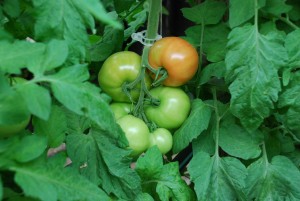.jpg) Rosemary (Rosmarinus officinalis) ‘Arp’ is winter hardy in southern Appalachian (USDA hardiness zones 6-b and 7-a) gardens for two decades , including some very cold winters. Other rosemary cultivars which have succeeded include ‘Athens Blue Spires’, ‘Hardy Hill’, and ‘Salem’.
Rosemary (Rosmarinus officinalis) ‘Arp’ is winter hardy in southern Appalachian (USDA hardiness zones 6-b and 7-a) gardens for two decades , including some very cold winters. Other rosemary cultivars which have succeeded include ‘Athens Blue Spires’, ‘Hardy Hill’, and ‘Salem’.
Locate a site with a “micro-climate” advantage such as next to a driveway or along the southside of a red brick home or a dark colored garage wall. Here winter temperatures vary by a few degrees warmer. Dark asphalt pavement absorbs and retains heat. Next to large bodies of water, such as a swimming pool and a water garden, may also be slightly warmer in the winter.
Plant rosemary in well-drained soil and in full direct sunlight. With rosemary and other semi-tender herbs, winter kill may also be caused by wet, soggy soil rather than cold.
‘Arp’ matures a handsome woody shrub with fine textured foliage. It grows 3-4 feet tall and wide, and blooms in early spring. The blue flowers are small and attract lots of insect activity.





